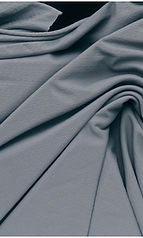
GWCX0005
Cotton 100%

GKCP0022
Cotton 65%
Polyester 30%
Spandex 5%

GKCX0001
Cotton 100%

GKCP0024
Cotton 74%
Polyester 26^

GKCX0002
Cotton 100%

GKCP0020 L
Cotton 65%
Polyester 35%

GWPX0023
Polyester 99%
Spandex 1%

GWPR0033
Polyester 67%
Rayon 33%

GWPR0030
Polyester 56%
Rayon 44%

GWPX0034
Polyester 100%

GKPS0027
Polyester 76% Askin 18%
Spandex 6%

GKPS0028
Polyester 94%
Spandex 6%

GWNR0015
Nylon 18%
Rayon 82%

GWNR0006
Nylon 63% Rayon 34%
Spandex 3%

GWNB0020
Nylon 16%
Mulberry 84%

GWNT0009
Nylon 24%
Tencel 76%

GWNR0029
Nylon 27% Rayon 72%
Polyester 1%

GKNS0017
Nylon 74%
Spandex 26%

GWMT0002
Modal 55%
Tencel 45%

GKMS0006
Modal 94%
Spandex 6%

GWMP0004
Modal 70%
Polyester 30%

GWMP0003
Modal 78%
Polyester 22%

GWTP0012
Tencel 66%
Polyester 34%

GWMT0002
Modal 55%
Tencel 45%

GKTS0005
Tencel 95%
Spandex 5%

GKTP0044
Tencel 67%
Polyester 28% Span 5%

GWTX0024
Tencel 100%
.jpg)
GKPP0032
Polyethylene 50%
Polyester 25%
Graphene 25%

GKPP0038
Polyethylene 50%
Polyester 50%
.jpg)
GKPP0031
Polyethylene 50%
Polyester 50%
.jpg)
GKPP0039
Polyethylene 50%
Polyester 50%
Tri-Acetate
Acetate is a fiber made from cellulose acetate, classified as a semi-synthetic fiber. Although this fiber is derived from natural materials such as wood pulp, its manufacturing process is carried out chemically. Acetate fibers have a similar feel and appearance to silk.

GWAP0021
Tri-acetate 75%
Polyester 25%